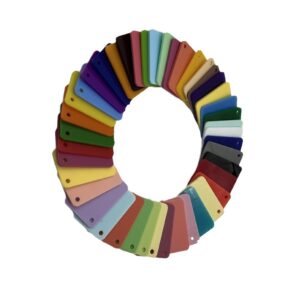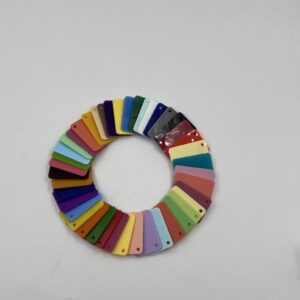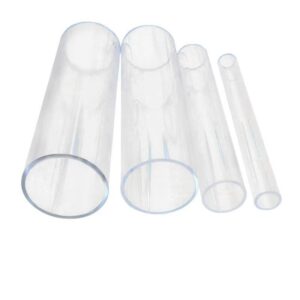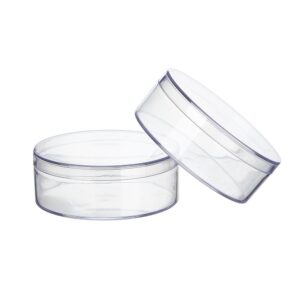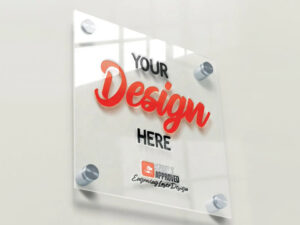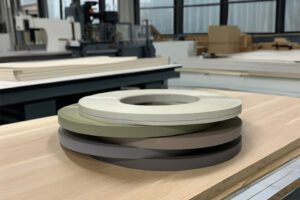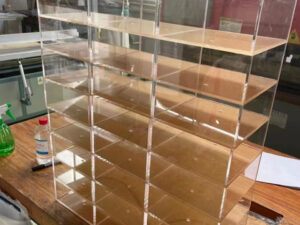Summary
An acrylic trade show booth is a contemporary display structure used at exhibitions and trade shows, characterized by its lightweight, durable, and visually appealing design. Made primarily from acrylic materials, these booths are recognized for their high transparency and customizable options, enabling exhibitors to create striking presentations that effectively showcase products and brand identities. The notable advantages of acrylic booths include their ease of transport and setup, durability in demanding environments, and the ability to integrate interactive elements that enhance visitor engagement, making them an increasingly popular choice among businesses aiming to attract and retain attendees’ attention at trade shows.
Table of Contents
The use of acrylic in trade show environments has gained traction due to its versatile nature, allowing for innovative designs and the incorporation of advanced technologies such as interactive displays and augmented reality experiences. This adaptability not only facilitates branding efforts but also enhances customer engagement, which is crucial in crowded exhibition spaces where differentiation is key. Furthermore, the sustainable sourcing and eco-friendly production practices associated with acrylic materials have become essential considerations for modern exhibitors, reflecting a growing trend towards environmentally conscious branding in the exhibition industry.
Despite their advantages, the design and construction of acrylic trade show booths come with certain challenges, including regulatory compliance, potential material limitations such as susceptibility to scratches, and budget constraints that can restrict creativity. Ensuring structural integrity and logistical efficiency during transportation and setup also poses challenges that exhibitors must navigate to achieve a successful presence at trade shows. As the trade show landscape continues to evolve, the future of acrylic booths is expected to focus on dynamic storytelling, personalized visitor experiences, and greater integration of sustainable practices, positioning them as an essential element of modern exhibition strategy.
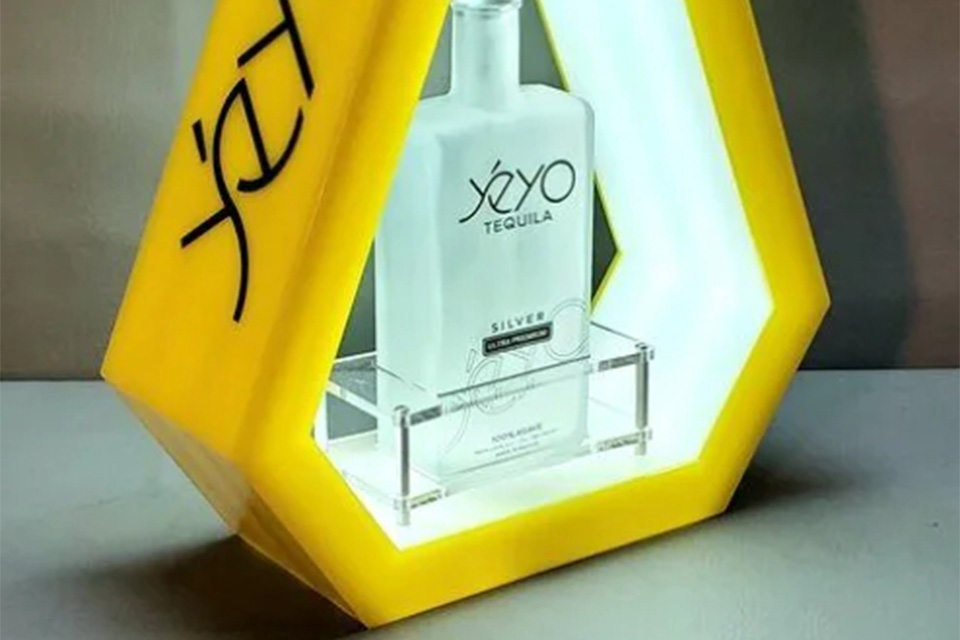
Design and Construction
Design Considerations
When designing an acrylic trade show booth, it is essential to balance aesthetics, functionality, and brand identity. The choice of materials should align with the overall message of the brand, avoiding any contradictions that could confuse potential customers. Moreover, considerations around the visibility of electrical and internet cables should be addressed in the booth’s design to maintain a clean and professional appearance. Ultimately, a well-designed acrylic booth can effectively create an inviting atmosphere that enhances the overall experience for trade show attendees.
Construction Techniques
The construction of acrylic booths typically involves a combination of modular and custom design elements. Modular components can be reused across various events, allowing for cost-effective solutions that do not sacrifice quality or appearance. Additionally, acrylic panels can be integrated with aluminum frames, creating structures that are both sturdy and visually appealing. When designing the layout, careful consideration must be given to the booth’s structural integrity, especially if it includes large displays or multi-level features.
Materials Used in Acrylic Trade Show Booths
Acrylic trade show booths are often designed with a combination of lightweight and durable materials that enhance both functionality and aesthetic appeal. The most common materials include aluminum and acrylic, with fabric frequently used for graphics and branding elements. Acrylic is favored for its versatility, strength, and ability to create visually striking displays that can effectively showcase products and services.
Benefits of Acrylic
Acrylic is an excellent choice for trade show booths due to its many advantages. It is lightweight, making it easier to transport and set up compared to traditional materials like wood or steel. Furthermore, acrylic allows for a high degree of customization, as it can be easily shaped and colored to match specific branding needs. The clarity and gloss of acrylic also contribute to a modern and sophisticated look that can attract visitors’ attention from a distance.
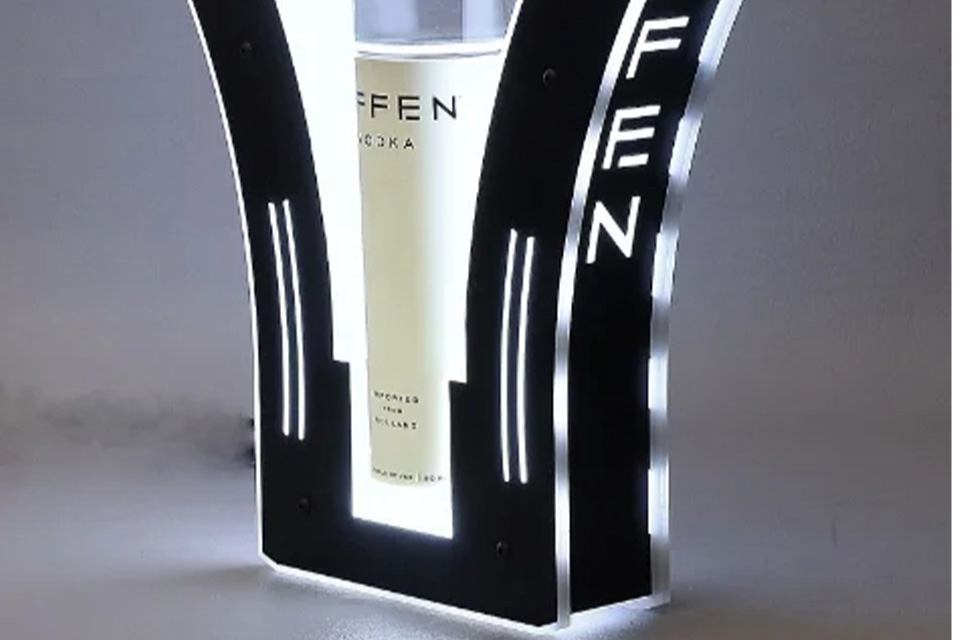
Benefits
Acrylic trade show booths offer numerous advantages that enhance both the display experience and brand communication.
High Transparency and Visibility
Acrylic displays are known for their exceptional clarity, allowing products to be viewed from all angles without obstruction. This high transparency ensures that the focus remains on the showcased items, thereby enhancing product visibility and potentially increasing customer engagement and sales. The modern aesthetic of acrylic also contributes to a sophisticated presentation that resonates with contemporary audiences.
Durability and Strength
Acrylic is a highly durable material that withstands the rigors of trade show environments. It is lightweight yet strong, making it an ideal choice for portable displays that need to endure frequent transport and setup. Its robustness protects the displayed items, providing an extra layer of security, which is particularly important for high-value products.
Customizable Options
One of the standout features of acrylic is its versatility in design. Exhibitors can easily customize acrylic displays to align with their specific branding or display needs, including color, shape, and even engraving options. This flexibility allows businesses to create a cohesive and branded display that enhances their marketing strategies while standing out in a crowded trade show setting.
Easy Maintenance
Acrylic displays are easy to clean and maintain, which is essential during busy trade shows where appearances matter. A simple wipe-down with appropriate cleaning solutions is typically all that is needed to keep them looking pristine, ensuring that the booth remains attractive throughout the event.
Enhanced Brand Communication
The use of acrylic displays can significantly enhance branding efforts. Their professional appearance not only attracts attention but also communicates a brand’s values and image effectively. This is vital in a trade show environment where many exhibitors compete for visitor attention.
Innovative Design Possibilities
Acrylic’s adaptability allows for innovative and eye-catching designs that can include unique shapes and features, making booths memorable and engaging. Creative elements, such as illuminated displays and interactive touchscreens, can also be integrated into acrylic structures, further enhancing visitor engagement and creating immersive experiences.
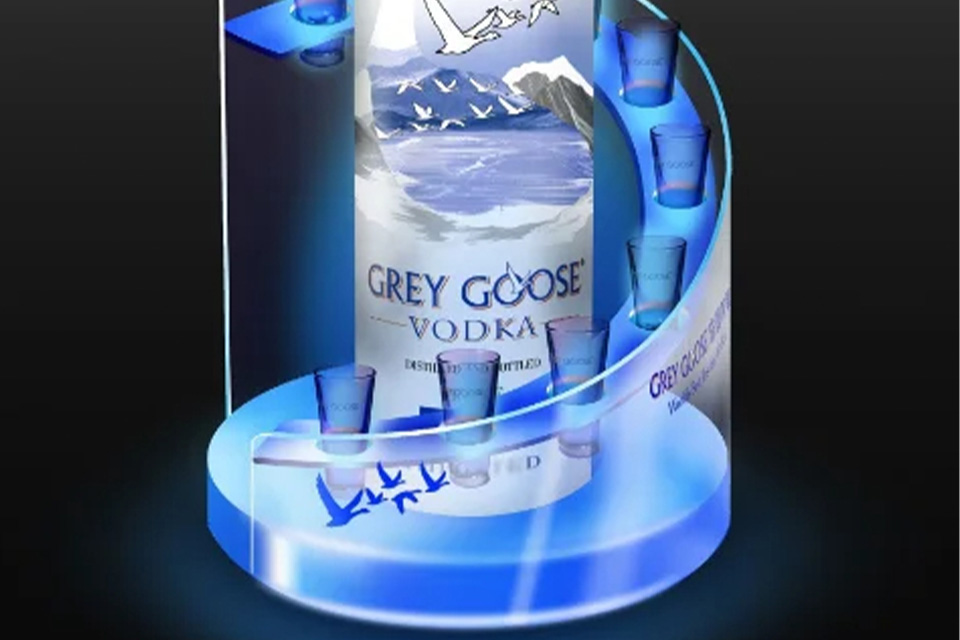
Usage in Trade Shows
Acrylic trade show booths have become increasingly popular for their versatility and aesthetic appeal. These booths are designed to create a visually engaging environment that can capture the attention of attendees and make a memorable impression. The use of acrylic materials allows for a sleek, modern look while also providing durability and portability, making them ideal for various exhibition setups.
Advantages of Acrylic Booths
Acrylic trade show displays offer several advantages that enhance their effectiveness in attracting visitors. One of the primary benefits is their transparency, which allows light to pass through and can create an inviting atmosphere. This transparency can be particularly effective when combined with well-placed lighting, highlighting products and branding elements effectively. Additionally, acrylic’s lightweight nature facilitates easy setup and teardown, making logistics more manageable for exhibitors, especially in time-constrained environments.
Customization Options
Exhibitors can take advantage of the customizability of acrylic booths to tailor their displays to specific branding and marketing goals. Many companies offer custom designs to ensure that the booth aligns with the brand’s identity while also addressing the practical requirements of the trade show space, such as dimensions and layout constraints. Features like interactive elements and engaging visuals can be incorporated to draw in visitors and encourage engagement, making the booth not only a display area but also an experience zone. Interactivity and Engagement To maximize impact, incorporating interactive elements into acrylic displays is highly recommended. This could include touchscreens, product demonstrations, or physical engagement tools that encourage attendees to interact with the booth. Such strategies not only elevate the visitor experience but also significantly increase the likelihood of lead conversion, as attendees are more likely to remember a brand that actively engages them during the exhibition.
Sustainability Considerations
With a growing emphasis on sustainability in exhibitions, acrylic trade show booths can be designed with eco-friendly practices in mind. Manufacturers are increasingly focusing on producing sustainable materials and adopting practices that reduce the environmental impact of their products. This trend aligns with the broader movement towards eco-conscious branding, allowing businesses to not only promote their products but also showcase their commitment to sustainability.
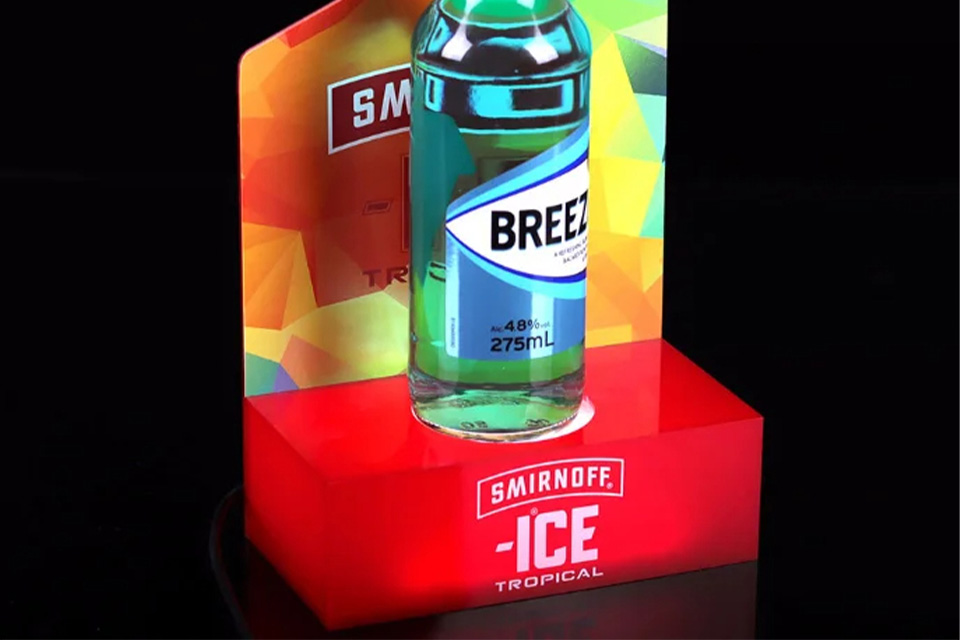
Case Studies
Successful Acrylic Trade Show Booths
Acrylic trade show booths have gained recognition for their versatility and engaging designs, allowing brands to effectively connect with their audience. Several case studies illustrate the impact of acrylic displays in various trade show settings.
Innovative Design and Visitor Engagement
One notable example involved a technology company that utilized an acrylic booth with interactive touchscreen displays. This setup not only showcased product details but also allowed visitors to engage directly with the technology, significantly enhancing their experience and understanding of the products on offer. The design encouraged exploration and interaction, making the booth a focal point of the trade show.
Comparison Stations
Another case study featured a consumer goods brand that implemented comparison stations using acrylic barriers to separate their products from competitors. This strategic arrangement highlighted product features and benefits, fostering consumer confidence and facilitating informed purchasing decisions. By using acrylic for its lightweight and durable properties, the brand was able to maintain a visually appealing and functional booth.
Customization and Modularity
A cosmetics company showcased a modular acrylic booth that adapted to different trade show layouts. This flexibility allowed them to create a unique experience at each event while maintaining a consistent brand message. The booth’s design included bright colors and innovative shapes that attracted visitors, making it one of the most photographed booths at the trade show.
Eco-Friendly Approaches
In line with sustainability trends, a food and beverage brand adopted an eco-friendly acrylic display that highlighted their commitment to the environment. By incorporating recyclable materials and energy-efficient lighting, they not only drew attention to their products but also aligned their brand with environmentally conscious values. This approach resonated well with attendees, further enhancing their brand image.
Challenges and Limitations
Designing and building an acrylic trade show booth presents several challenges and limitations that exhibitors must navigate to ensure a successful presentation.
Regulatory Compliance
One of the primary concerns when constructing a trade show booth is adherence to venue-specific regulations. Each trade show venue has specific rules regarding display dimensions, electrical setups, and safety measures, which must be verified early in the design phase to avoid last-minute adjustments that could jeopardize compliance. Failure to conform to these regulations can result in the exhibitor being unable to install their booth, leading to financial losses without the opportunity for sales presence on the show floor.
Material Limitations
While acrylic is often chosen for its aesthetic appeal and lightweight properties, it is not without its drawbacks. Acrylic boards are prone to scratches, which can detract from the visual impact of the display over time. Additionally, they have poor heat resistance, making them less suitable for environments with extreme temperature fluctuations. The need for careful handling and maintenance to avoid damage can add to the logistical challenges of using acrylic materials.
Budget Constraints
Exhibitors frequently face budgetary restrictions that can limit their design options. Although a tight budget might seem constraining, it is crucial to establish a realistic budget that reflects event objectives. Even a modest increase of 10-15% in budget allocations can significantly enhance the booth’s impact and return on investment (ROI). Moreover, the cost-effectiveness of acrylic, while appealing, must be balanced with long-term maintenance and refurbishment expenses to ensure durability and longevity.
Transport and Setup
Transportation logistics are also a critical consideration for acrylic trade show booths. Certain materials, particularly glass components, require special handling during transport, which can complicate logistics and increase costs. Additionally, the time constraints associated with setting up and tearing down displays can be challenging, necessitating the use of modular, lightweight components that are easy to assemble and disassemble. Pre-planning the setup process, including creating step-by-step guides or videos, can help mitigate these challenges 5 .
Sustainability Concerns
Finally, as sustainability becomes an increasingly important factor in exhibition planning, exhibitors are challenged to find ways to minimize their environmental impact while utilizing acrylic and other materials. Balancing aesthetic appeal with eco-friendly practices can complicate material selection and booth design decisions.
Future Trends
As the landscape of trade shows continues to evolve, acrylic trade show booths are poised to benefit from several emerging trends that leverage technology, sustainability, and enhanced engagement strategies.
Integration of Advanced Technologies
The integration of immersive technologies such as Augmented Reality (AR) and Virtual Reality (VR) is expected to revolutionize how exhibitors utilize acrylic booths. These technologies allow brands to create highly interactive experiences, enabling visitors to engage with products and narratives in ways that were previously unimaginable. With the rollout of 5G networks, exhibitors will experience ultra-fast connectivity and real-time interactions, further enhancing the digital experience within acrylic displays.
Sustainability Considerations
Sustainability is becoming a central focus in exhibition design. Acrylic, known for its versatility and durability, can be sourced from recycled materials and produced using environmentally friendly methods. As businesses increasingly prioritize eco-friendly practices, the demand for acrylic booth structures that minimize environmental impact will likely rise. This includes using modular designs that can be reused for multiple events, thereby reducing waste. Additionally, sustainable giveaways and digital incentives can complement the use of acrylic, ensuring that the overall exhibition experience aligns with modern sustainability goals.
Dynamic Storytelling
The future of acrylic booths will also involve dynamic storytelling elements that enhance visitor engagement. By incorporating multimedia features, such as interactive displays and digital storytelling tools, exhibitors can create layered narratives that resonate with attendees. This trend is particularly important as visitors seek more meaningful experiences and interactions at trade shows. Utilizing acrylic to showcase multimedia content not only enhances visual appeal but also creates a more immersive environment that captivates and educates audiences effectively.
Emphasis on Personalization
Hyper-personalization is expected to be a key trend in trade show experiences. Acrylic booths can incorporate technology that allows for tailored interactions based on visitor preferences and behaviors. This could include personalized content delivery through digital screens embedded in the acrylic displays, enabling exhibitors to engage attendees in a more meaningful way. As competition intensifies, businesses that adopt these personalized strategies will stand out, delivering smarter and more engaging interactions.





